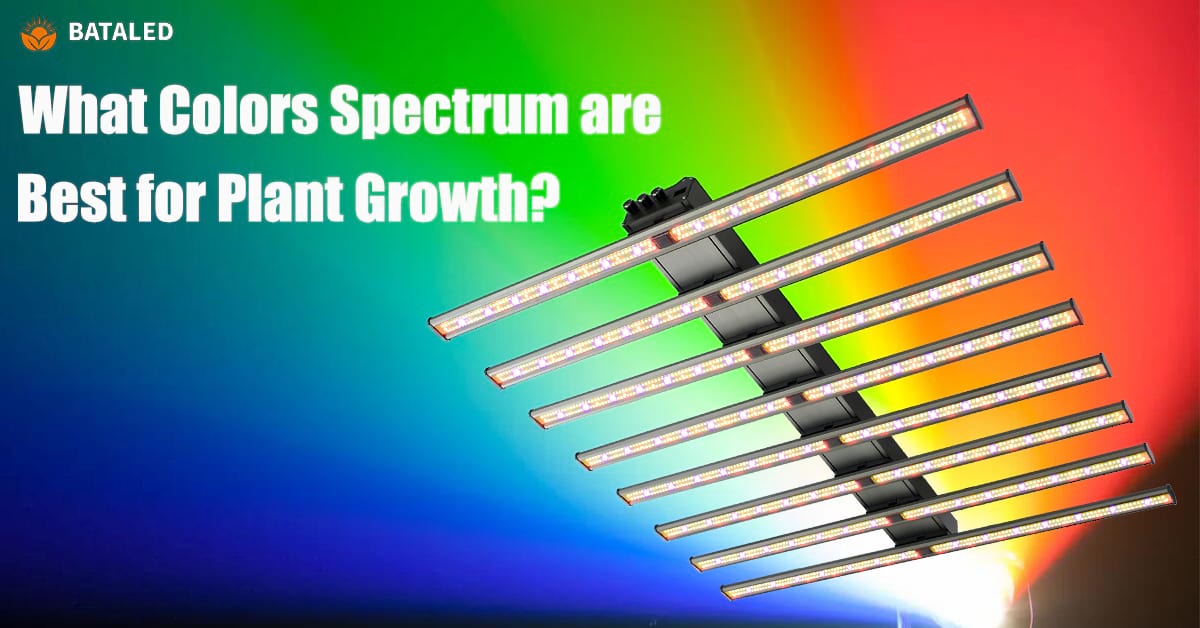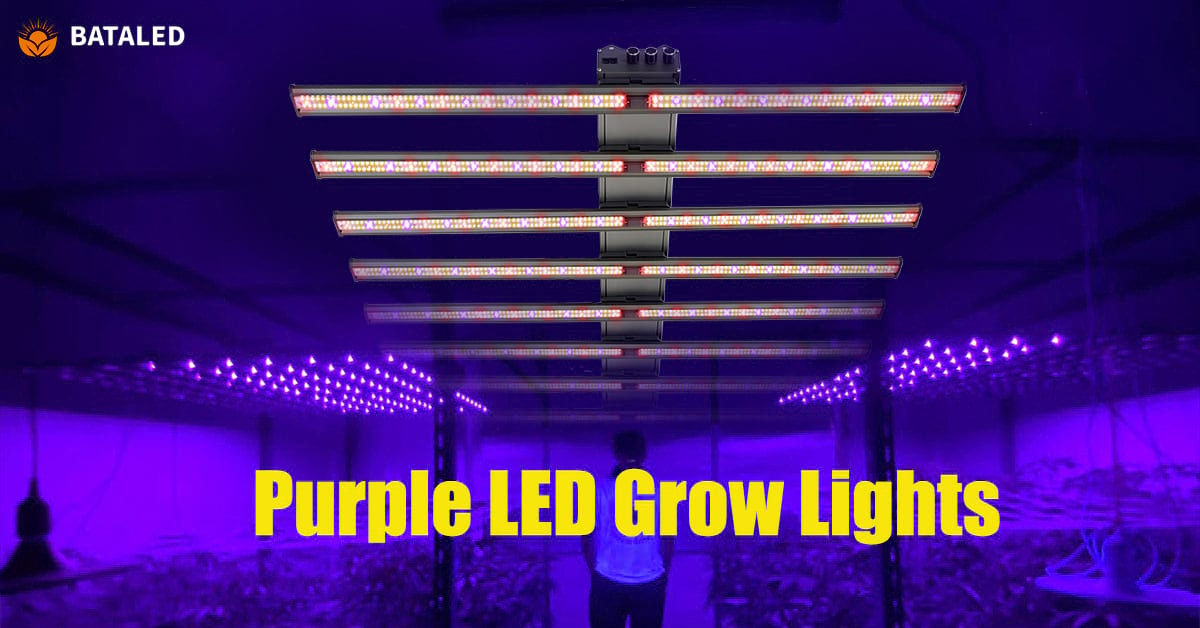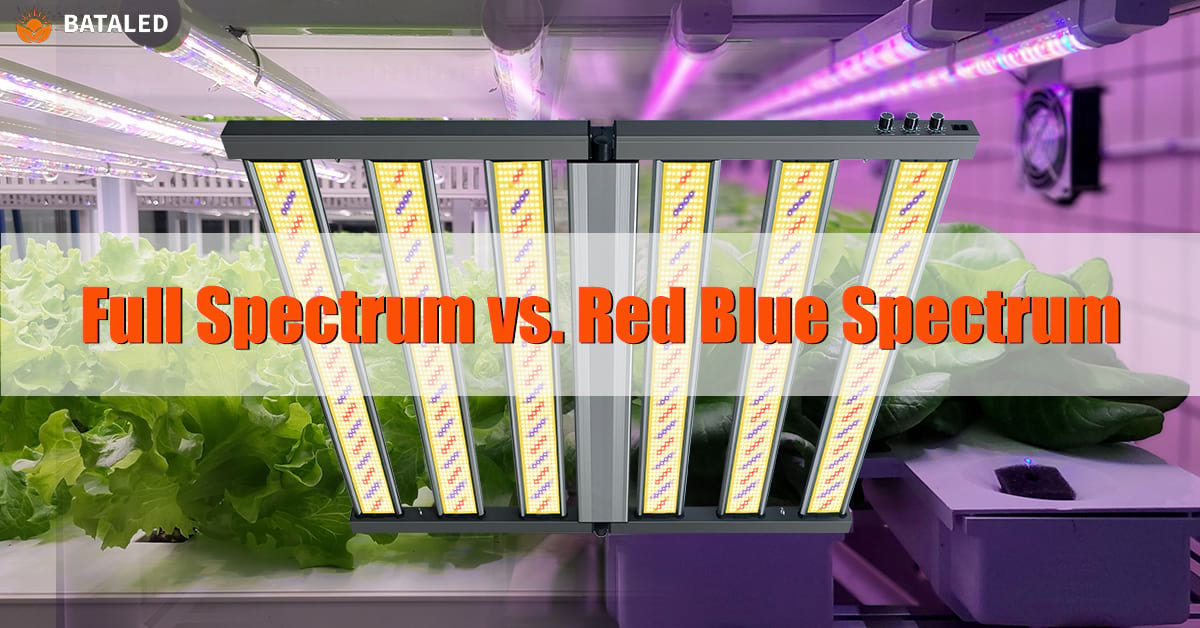Grow Light PPFD Demystified: Tailor Perfect PPFD for Each Plant’s Growth Stage
When you start indoor gardening, you’ll notice the term “PPFD” constantly mentioned among growers. It sounds technical and often puzzles beginners.
Don’t worry. This article will completely demystify PPFD for you. Using the simplest terms, it will teach you how to tailor the perfect light for your plants at every growth stage, helping your gardening journey get a winning start from the very beginning.
What Does PPFD (Photosynthetic Photon Flux Density) Mean?
Simply put, PPFD (Photosynthetic Photon Flux Density) measures how many truly useful light particles (photons) hit your plant’s leaves every second. Imagine your plant leaf is a solar panel; PPFD tells you the intensity of sunlight energy that the panel receives at a specific location and time. Its unit is μmol/m²/s. You don’t need to remember this complex abbreviation; just understand that a higher number means stronger light.
What Is PPFD in Grow Lights?
When we talk about PPFD under grow lights, the focus shifts from the sun to artificial light sources. It’s not a measure of how “bright” a light appears to our eyes, but rather how “effective” it is for plants. The core task of a good grow light is to produce a sufficiently high and uniform PPFD value at the plant canopy (the area with the densest leaves) to efficiently drive photosynthesis, mimicking or even surpassing ideal natural light conditions.
Why Is PPFD Important For Plant Growth?
PPFD is the cornerstone of indoor gardening because it directly determines the speed at which your plants produce food. Photosynthesis is like a magical kitchen, and PPFD is the rate at which raw materials are delivered to it. If the delivery is too slow (PPFD too low), the kitchen operates slowly, leading to leggy growth, pale leaves, and stunted plants – this is “light hunger.” Conversely, if materials flood in too fast (PPFD too high), the kitchen overheats and overloads, causing leaf burn, yellowing, curling, and overall metabolic disorder – this is called “light burn” or “light stress.” Therefore, mastering PPFD means mastering the key to your plant’s growth.
How To Measure PPFD?
To manage PPFD, you first need to measure it. The unit of PPFD is µmol/m²/s, but the key is to measure it at the height of your plants and take readings at multiple points (at least 9-16 points) within the lit area and then average them. This is because light distribution under a grow light is never perfectly uniform. Relying only on the measurement from the center brightest spot is misleading.
For commercial or professional growers, professional tools like handheld quantum sensors or spectrometers provide the most accurate data. But for most home growers, there are now well-calibrated smartphone apps (like Photone) that serve as excellent, cost-effective starting options, allowing you to get valuable reference data without a significant investment. By measuring, you can map your light coverage, ensuring each plant gets the light it needs – not too much, not too little.
What Impacts PPFD Requirements for Plants?
Understanding how to measure leads to the next core question: How much PPFD does my plant actually need? The answer isn’t a fixed number but a dynamic process, primarily dependent on three key factors.
Growth Stage
Plants have vastly different light needs at different life stages, much like how babies, teenagers, and adults have different appetites. Following the principle of “start low and adjust gradually” is crucial to avoid burning delicate seedlings with intense light.
| Growth Stage | Ideal PPFD Range | Notes |
|---|---|---|
| Seedlings/Clones | 100 – 300 μmol/m²/s | Root systems are fragile, young leaves are tender. Gentle light maintains growth but doesn’t accelerate it aggressively. |
| Vegetative Stage | 400 – 600 μmol/m²/s | Plants focus on growing taller, stronger, and leafier. They need ample energy to build a large vegetative structure. |
| Flowering/Fruiting Stage | 600 – 1000+ μmol/m²/s | This stage requires the strongest light to support the development of flowers, fruits, or buds, maximizing yield and quality. |
Plant Species (Light Preferences)
Different plants have evolved with different light preferences in their natural environments. Ignoring these differences and using the same light for lettuce and tomatoes is a recipe for failure. Here is a classification of PPFD needs for some common plants to help you quickly orient yourself.
| Plant Type | Examples | Ideal PPFD Range | Notes |
|---|---|---|---|
| Low-Light Plants | Ferns, Pothos, Peace Lily, Snake Plant | 50 – 200 μmol/m²/s | Typically foliage plants native to forest understories. Avoid direct strong light. |
| Medium-Light Plants | Monstera, Philodendron, Orchids, Peppers, Basil | 200 – 500 μmol/m²/s | Most herbs, spices, and ornamental plants fall into this category. |
| High-Light Plants | Tomatoes, Cucumbers, Cannabis, Roses, Succulents | 500 – 1000+ μmol/m²/s | Typically fruiting or flowering plants native to open, sunny areas. |
Note: This is a general guide. The most reliable method is to observe your plants: if stems stretch and leaf color lightens, it might need more light; if leaves bleach, develop brown tips, or curl inward, the light might be too strong.
Environmental Conditions
Light doesn’t operate in isolation; it’s closely linked to other factors in your grow environment. Photosynthesis is a complex biochemical process requiring light, carbon dioxide (CO2), water, and suitable temperatures to work together. If your environment has low CO2 concentration, even extremely high PPFD cannot be fully utilized by the plant and may instead cause light stress and waste energy. Similarly, if temperatures are too high or humidity too low, overly strong light can intensify transpiration, leading to dehydration or nutrient imbalances. Therefore, powerful light must be matched with good ventilation (for CO2 replenishment), suitable temperature (22-28°C / 72-82°F), and humidity to achieve maximum efficiency.
Tools & Tips to Optimize Your PPFD Setup
Armed with the knowledge above, you can start optimizing your lighting setup. First, use the measurement tools mentioned earlier to map your light coverage and ensure uniformity. If you find the edges are too dim, consider adjusting the light’s height or angle, or adding reflective materials.
Adjusting the light height is the most direct way to change PPFD:
-
The closer the light is to the plants, the higher the PPFD, but the coverage area becomes smaller, and you must strictly guard against light burn.
-
The higher the light is hung, the lower the PPFD, but the coverage is more uniform.
Many modern LED grow lights come with dimming functions, allowing you to finely control the light intensity without raising or lowering the fixture, which is very convenient.
Furthermore, choosing an LED grow light that is inherently energy-efficient (high photon efficacy, μmol/J), has a full spectrum (rich in blue and red light), and provides uniform light distribution is the foundation for all optimization. Particularly, the LED grow lights from BATA LED not only provide the spectrum and intensity plants need but can also save you significant electricity costs in the long run, achieving a perfect balance between energy efficiency, environmental friendliness, and high yields.
Conclusion
Now, you are no longer confused by the term “PPFD.” You understand what it is, why it’s so important, and how to measure and adjust it based on your plant’s growth stage, species, and environment. Remember, successful indoor gardening isn’t about providing the strongest light, but the most appropriate, intelligent light. Pick up your measurement tool, observe your plants closely, and start this fascinating light experiment. You are now the true master of your plants’ growth.
FAQ:
Q: How much PPFD for seedlings?
A: Seedlings are very delicate. The ideal PPFD range is between 100-300 μmol/m²/s. Light that is too strong can inhibit their growth or even burn them.
Q: How much PPFD for veg?
A: During the vegetative stage (growing leaves and stems), plants need more energy. Aim for a PPFD value between 400-600 μmol/m²/s to ensure robust plants with lush foliage.
Q: How much PPFD for flowering?
A: Flowering and fruiting require immense energy, making this the most light-demanding stage. Target PPFD values should be between 600-1000 μmol/m²/s. For some high-yield crops (like tomatoes, peppers), it can approach or briefly exceed 1000.
Q: How much PPFD for autoflowers?
A: Autoflowering plants don’t have a distinct light cycle switch. Their PPFD needs throughout their lifecycle (typically 18-24 hours of light per day) can reference the stages above, but often a relatively moderate intensity is recommended (e.g., 500-700 μmol/m²/s throughout) to avoid stress during their rapid growth. The key is still to observe the plant’s condition.
Q: What’s the difference between PPFD and Daily Light Integral (DLI)?
A: PPFD is the light intensity (like the instantaneous rainfall rate), while DLI is the total light amount (like the total rainfall per day). DLI is the accumulation of PPFD over a day (PPFD × light hours × 3600 / 1,000,000). Plants have a total DLI requirement, which you can achieve using either high PPFD for a shorter time or lower PPFD for a longer time.
Q: How to convert lux to PPFD?
A: There is no precise universal conversion formula because Lux is based on human eye sensitivity, while PPFD is based on plant photosynthesis. The conversion factor depends on the light source’s spectrum (color). For example, for full-spectrum white LEDs, a very rough estimate is ~0.015 to 0.020 (meaning 10,000 Lux ≈ 150-200 PPFD). However, to get accurate data, it is highly recommended to use a PPFD measurement tool designed for plants rather than relying on conversion.
CATEGORIES
Recommended Post

Where It’s Legal to Grow Cannabis: Ultimate Tips & Cultivation Laws
About Author—Jose Li
Jose, a senior content creator at BATA LED, brings over 5 years of expertise in LED grow light. He delivers valuable insights to help growers and farmers better understand LED grow light technology, empowering them to boost crop yields and quality with advanced lighting solutions.


